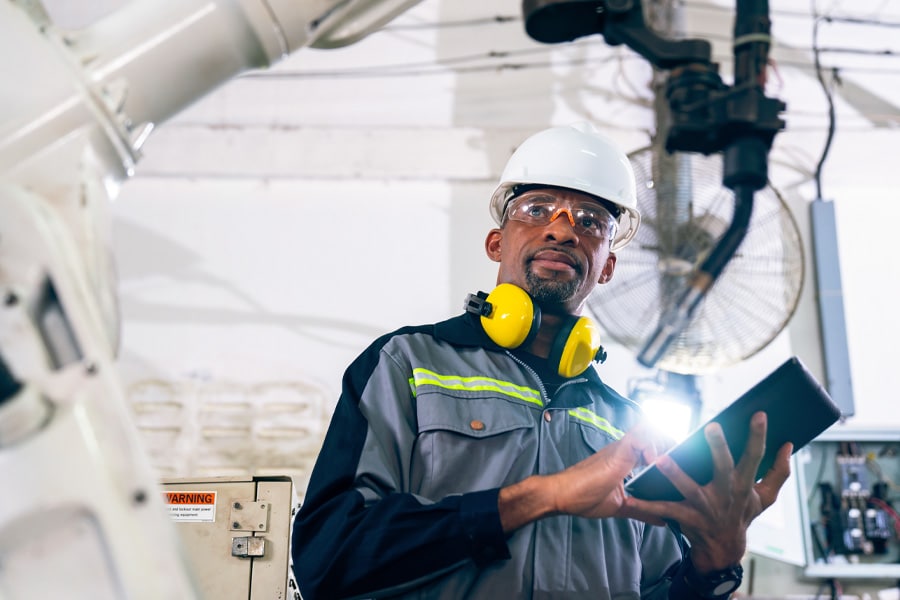Humanity has long had a fascination with – and fear around – the idea that it might eventually be supplanted by artificial intelligence.
That some form of robotic life might take the place of human beings has been a theme of science fiction literature and cinema for as long as the genre has been in existence. Yet, in some industries, the replacement of human beings with robotic technology has become close to scientific fact.
The automotive sector has been using computer-programmed robots to assemble a number of its products for years, kicking off in Japan in the 1960s. Other manufacturers have taken the robotic leap, including distribution centers. Many of us will have seen footage of droids whizzing about a giant warehouse, collecting and packing items for customers.
However, one of the sectors that’s been somewhat behind the robotic curve – and technology in general – is construction. Compared to other industries, construction’s take-up of modern methods has been sluggish, to say the least.
Robotics in construction and the skills shortage
It is true that off-site manufacturing and prefabrication are speeding up the process of building homes and other schemes and helping to ensure that quality is maintained in – literally – factory conditions. And with a skills shortage hitting the sector and demand surging after the pandemic, the use of on- and off-site technology is sure to increase.
But it remains, relatively speaking, in its infancy. The industry still relies on large numbers of people to design and put together the built environment we live and work in.
While greater automation could be beneficial to the sector’s productivity, attitudes toward modern methods of construction vary across the sector. The industry simply isn’t on the same page regarding the use of technology, with some firms championing it and many others not.
According to a 2019 survey by consultant KPMG, among the top 20% of construction players who deemed themselves “technology ready” – those firms whom KMPG calls “innovative leaders” – 86% use building information modeling (BIM), 72% use drones and 10% use construction robotics.
Compare that with the bottom 20% of companies – those regarded by KPMG as being “behind the curve” when it comes to technology – figures covering the same criteria make for grim reading: 28%, 3% and 0%, respectively.
Change is in the air
Robot manufacturer ABB believes this is set to change, however. An ABB survey of 1,900 large and small construction businesses in Europe, the US and China published last year found that 81% of firms polled planned to either introduce or increase the use of robotics in the construction industry in the coming decade.
Admittedly, this would be starting from a pretty low base. In a sign of how far construction lags behind other sectors, ABB’s research found that only 55% of construction companies said they use robots, compared with 84% in automotive and 79% in manufacturing.
While many construction firms recognize the need to improve operational efficiencies, and as the skills crisis bites, surveys often find that companies put using robotic or other new technology way down on the list of “must haves,” not least due to the cost.
If the construction industry is to improve productivity, it must embrace more technology, and that means recognizing that, for some tasks, deploying robots can lead to better outcomes than can be achieved with human beings.
Brian Ringley, construction technology manager at robot manufacturer Boston Dynamics, highlights that 85% of construction projects experience overruns and, therefore, budget overruns. Robots, he argues, can help get this figure down by doing tasks like site checks and quality assurance, leaving people to focus on other more creative, less repetitive and often safer duties that can help deliver projects on time.
To this end, Ringley and his team created a dog-like robot called “Spot,” which is equipped with cameras and data collection technology and trots around a building site checking up on things. “The work is dull and is also extremely difficult for a human to do as precisely as a robot is capable of,” he argues.
Pluses and minuses of robotics in the construction industry
There are clearly advantages to having robots work on a construction job. They can work 24/7 on some tasks, don’t require lunch breaks, can improve the safety of human workers by doing some of the sector’s more difficult jobs that could lead to injury and, some argue, can deliver a more precise result.
The downsides of using robots on a construction job include only doing what they are programmed to do – they can’t improvise. And the initial capital cost can be significant, anywhere between US$50,000 and US$150,000, according to some estimates. This could certainly dissuade a smaller firm from investing in robotic technology.
There are also concerns that some skilled jobs, like bricklaying, will be lost if robotic bricklayers gain a foothold in the industry. Or that 3D concrete printers will be developed and rolled out on a scale that sees them being able to build a house or office development in double-quick time, reducing the on-site workforce to a 3D machine operator and some quality checkers.
There’s no doubt that robotic technology will make further strides. And yes, it will aid and abet those who design and deliver the built environment we all inhabit.
But when all’s said and done, robots will never completely replace humans in the construction process.
We are creatures imbued with imagination, flair and creative endeavor. The construction industry needs to improve its productivity, but it also needs – and will always feature – imagination, ingenuity and artistic ambition.











